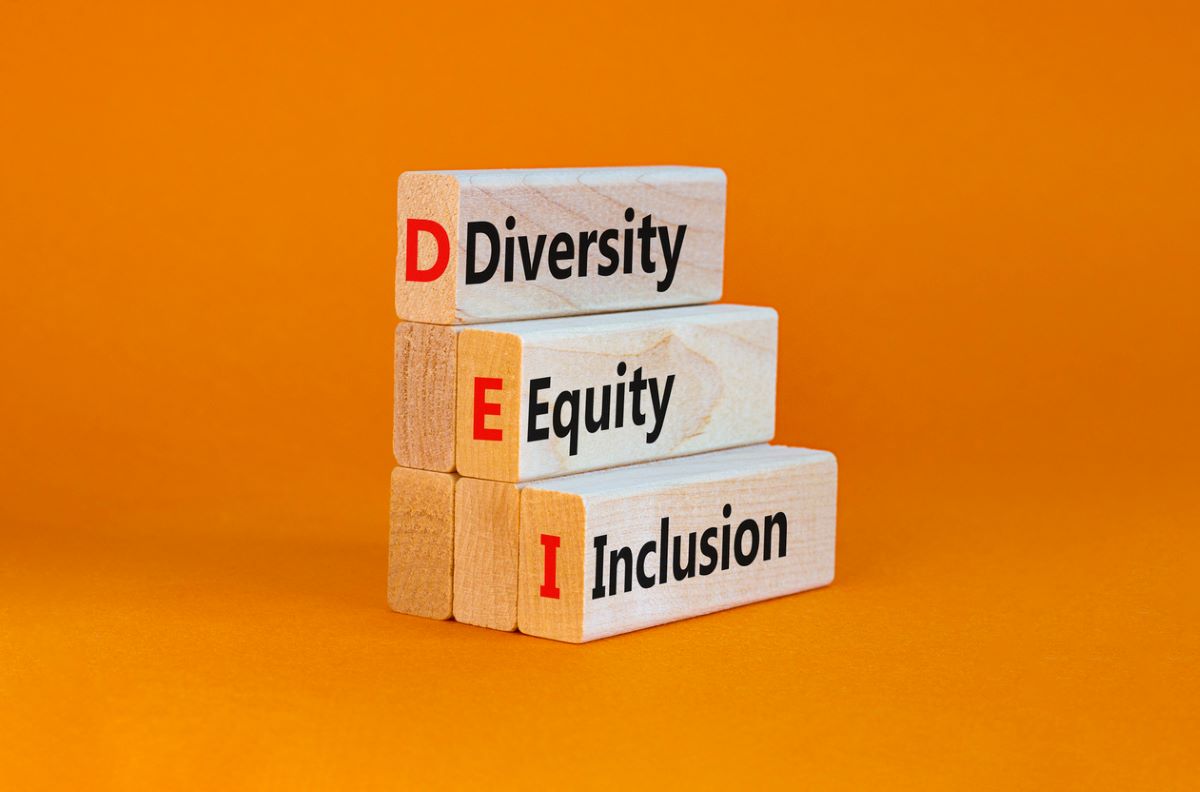How to make DE&I a part of your organization’s ethos–and not just a box to check
Follow this guidance to ensure your company takes meaningful strides toward equity, rather than just publishing empty bluster or pushing phony lip service.

When first exploring what it means to create an organization that prioritizes DE&I, I recall hearing a phrase that helped me immediately understand what was missing in so many organizations.
“If diversity is being invited to the party, inclusion is being asked to dance.”
I viscerally remember what it felt like, as a teenager, to be invited to a party or to attend a school function where dancing was involved. I stood against the wall or sat in a corner, and when my favorite song came on, nobody asked me to dance. That feeling was worse than if I had just stayed home.
This is exactly where so many organizations get it wrong. As we saw at the height of the Black Lives Matter movement in the summer of 2020, countless organizations made bold commitments toward DE&I efforts. I’m willing to bet that most of those efforts were made based on how it looked to the outside world by creating diversity hiring goals (read: inviting folks to the party) and were less concerned about listening to their teams and considering how it actually felt within their organization (read: inviting everyone to dance).
What so many fail to consider is the importance of belonging in cultivating a truly inclusive culture where people feel psychologically safe to be themselves.
Below are three key elements to creating an organization focused on inclusion and belonging, as well as diversity.
1. Buy-in at the top is everything.
According to Merriam-Webster, buy-in is the acceptance of and willingness to actively support and participate in something (such as a proposed new plan or policy).
An organization that does not have buy-in on DE&I from its senior leadership will only ever be checking boxes, as this is required to get the proper support, funding and attention that DE&I initiatives warrant.
If you’re not an executive at your company yet you’re passionate about DE&I, find someone on the leadership or executive team who you believe will support this effort, and use their positionality to influence others at the top. Frankly, we should no longer have to convince people that racism and inequality don’t belong in the workplace, yet this is still the reality we live in.
Alongside that, there are still plenty of leaders that need you to make the “business case” for diversity, equity and inclusion to get them to buy in. The good news is there is a boatload of data to convince your leaders of the countless benefits of prioritizing DE&I. Organizations that prioritize DEI are more creative, more innovative and more productive. Highly inclusive companies are more likely to hit their financial target goals by up to 120%.
According to research by McKinsey and Company, companies with more than 30% women executives were more likely to outperform companies where this percentage ranged from 10 to 30, and in turn these companies were more likely to outperform those with even fewer women executives, or none at all. Ethnically diverse companies are 35% more likely to have financial returns above their respective national industry medians. According to Harvard Business Review, diverse companies are 70% more likely to capture a new market.
2. Representation matters.
Have you ever travelled to a different country where you don’t speak the language and noticed how comforting it can be to come across someone who is from where you’re from? That feeling, right there, is why representation matters.
There is a war on talent right now, and Glassdoor reports that 76% of job seekers claim a diverse workplace is an important factor when evaluating companies and job offers. They further note that nearly a third of employees and job seekers (32%) would not apply to a job at a company where there is a lack of diversity among its workforce.
The Harvard Business Review also reported that the racial/ethnic composition of the public relations industry in the United States is 87.9% white, 8.3% African American, 2.6% Asian American, and 5.7% Hispanic American. Now, imagine how it feels to be a person of color, evaluating job offers, in an industry that is 87.9% white. On the flipside, imagine how comforting it might feel to the 8.3, 5.7 or 2.6% of nonwhite people when they see someone in the PR industry who looks like them. If you want to attract and retain people in the middle of this war on talent, make sure your team represents a wide range of identities.
3. Don’t make it optional.
Listen to your team. Doing so will help you create a true organizational ethos of diversity, equity and inclusion, rather than just checking a box. Ask them what they want to learn about, and tailor the DE&I training to your specific organizational needs and wants. DE&I is not one-size-fits-all.
There are a myriad of ways to get your team’s input such as surveys, brainstorms, group discussions, 1:1s with managers, and enlisting the help of DE&I consultancies. The key is to listen to your team, and craft your DE&I program based on your unique organization’s needs and goals.
Once that’s done, I recommend making your DE&I training consistent and mandatory. For example, you can select a recurring time each month (we chose 1 p.m. PST every fourth Thursday of the month at BAM) for mandatory DE&I discussions, trainings and brainstorms. Our CEO regularly helps to convey the value and importance of these sessions, which helps keep everyone engaged. From there, it’s a team effort to never stop beating that drum.
These are just a few of many powerful puzzle pieces that can create lasting cultural change. There is no easy button here; this work will require you to look at your individual and organizational biases and do something vastly different. Ultimately, for an organization to have a cultural ethos of belonging and inclusion, there is no shortcut. If you’re looking for a different outcome, you must start by changing your behaviors.
Jill Veglahn is chief people officer at BAM Communications.






